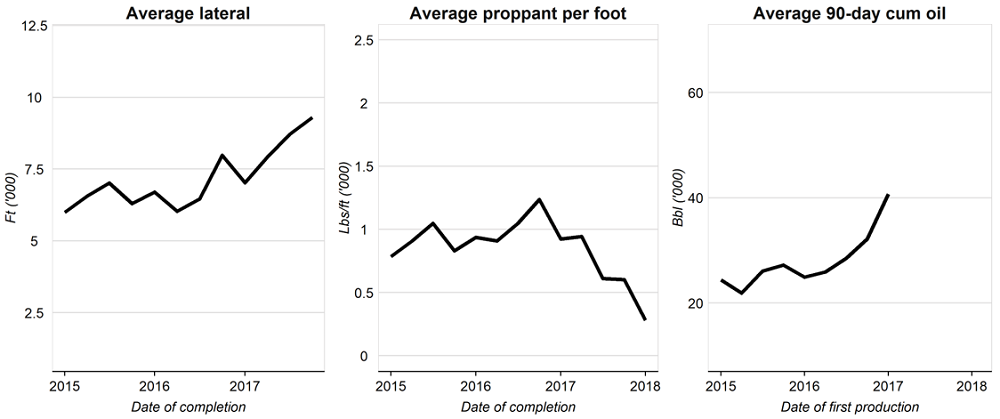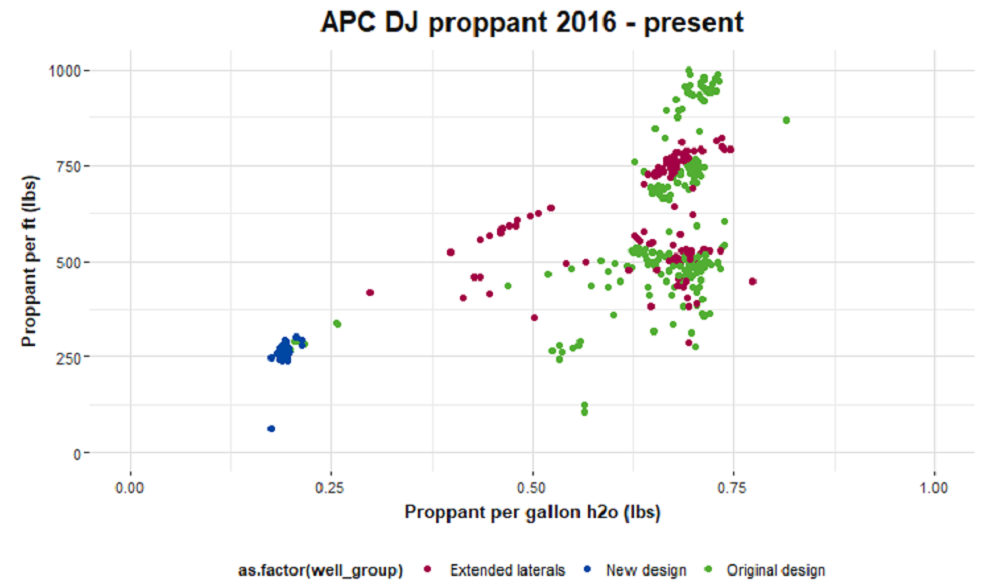Situated near the Rocky Mountains in northern Colorado is the Denver-Julesburg Basin. Operators in the basin are focusing in and around Weld county, targeting the Niobrara and Codell formations. While the Permian steals headlines, many operators in the D-J are seeing improved economics with longer laterals, enhanced completions, and improved well performance.

Source: Energent
Since 2015, the D-J Basin’s average 90-day cumulative oil production has increased by 61%. Many operators are increasing investment in the D-J as result of improved commodity prices, including:
- Anadarko, who announced a $950m capital expenditure plan, running 5 drilling rigs.
- Highpoint Resources, who expect a $500-550m budget with 3 drilling rigs.
- Extraction Oil & Gas, who intend to spend circa $900m.
This is despite regulatory risks in the D-J due to an upcoming state election wand the possibility of the environmental and regulatory requirements changing.
Better Economics with Longer Laterals
For wells with a 2-mile lateral, Extraction Oil & Gas (XOG) currently averages $4.9m for completed well cost, and an EUR of 825 thousand barrels of oil equivalent (MBoe). Last year, Extraction completed wells on the Kenedy pad (Weld county) using 1.5 to 2.6 pounds of proppant per gallon of fluid. In 2018, however, the company has tested a less proppant intensive completion design, using circa 0.6 pounds of proppant per gallon. With WTI at $60 bbl, Extraction anticipates an average well with the new completion design to provide an 80% IRR and at $70 bbl expects 112% IRR.
Meanwhile, Anadarko’s focus on 2-mile laterals using high fluid, low proppant slickwater frac jobs appears to be paying dividends. Compared to original completion designs from 2016, the new design (which uses 72% less proppant) notably reduces completed well cost per lateral foot.

Source: Energent
Anadarko’s new design is superior to the original design, with 6-month cumulative oil volumes being 45% higher and 12-month cumulative oil volumes showing a 52% improvement.
Maturity, Efficiency, and Strong Returns
The D-J is a more mature basin for horizontal drilling and completion activity; 97% of the wells are drilled on a multi-well pad. In 2017, the average pad size was 8 wells per pad, compared to 12 wells per pad in 2018. Operators have also focused on efficient operations through water infrastructure investments to recycle fresh water, box solutions to store frac sand to reduce truck traffic, and quiet frac fleets to reduce noise pollution.
Overall, operators across the D-J are moving to a standard 2-mile lateral with several operators moving to 2.5+ mile laterals. Based on a D-J peer group, operators are reporting 50-95% IRR at current commodity prices. Other basins may get the headlines, but operators and investors in the D-J are reporting how right-sizing well completions can enhance production as a shale play matures.
See the production data in action here.
Todd Bush, Principal, Energent Group
[email protected] or ++1 (713) 599 1100




